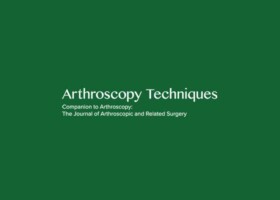
Authors:
Joshua A. Greenspoon, B.Sc., Maximilian Petri, M.D., and Peter J. Millett, M.D., M.Sc.
Abstract:
The surgical management of massive rotator cuff tears is challenging to orthopaedic surgeons. The prevalence of massive rotator cuff tears has been reported to be as high as 40% of all rotator cuff tears, and failure rates are higher when compared with smaller tears. Many surgical treatment options exist including debridement with biceps tenodesis, complete repair, partial repair, repair with patch augmentation, superior capsule reconstruction, tendon transfer, and reverse total shoulder arthroplasty. However, concerns regarding longevity of arthroplasty implants and morbidity associated with tendon transfers lend these treatment options to be less desirable in younger and more active patients.
Advances in arthroscopic equipment and surgical technique have allowed for many massive rotator cuff tears to be anatomically repaired arthroscopically in a similar fashion to smaller tears. This is important because accurate restoration of the anatomic footprint may favor healing because of favorable biomechanical conditions. Furthermore, the use of knotless repair constructs may help improve healing potential because the lack of medial knots may improve vascular inflow and the use of a wider suture material helps distribute the compressive forces over a larger surface area of the repaired cuff tendon, thereby preventing suture cut-through. Additional benefits include decreased operative time6 and elimination of potential postoperative knot impingement within the subacromial space.7 The purpose of this report is to describe an arthroscopic knotless technique using an extended linked, double- row construct for the repair of massive rotator cuff tears (Video 1, Table 1).
For the complete study: Arthroscopic Knotless, Double-Row, Extended Linked Repair for Massive Rotator Cuff Tears
